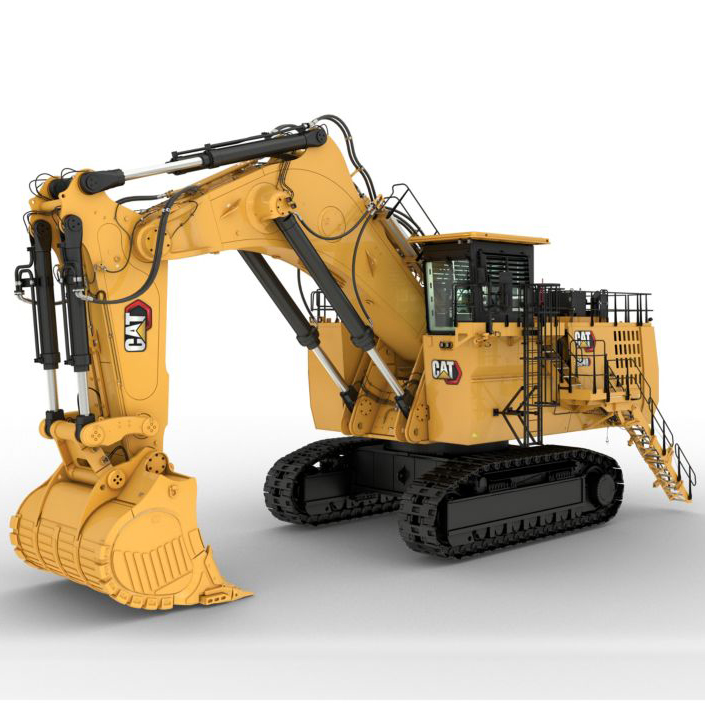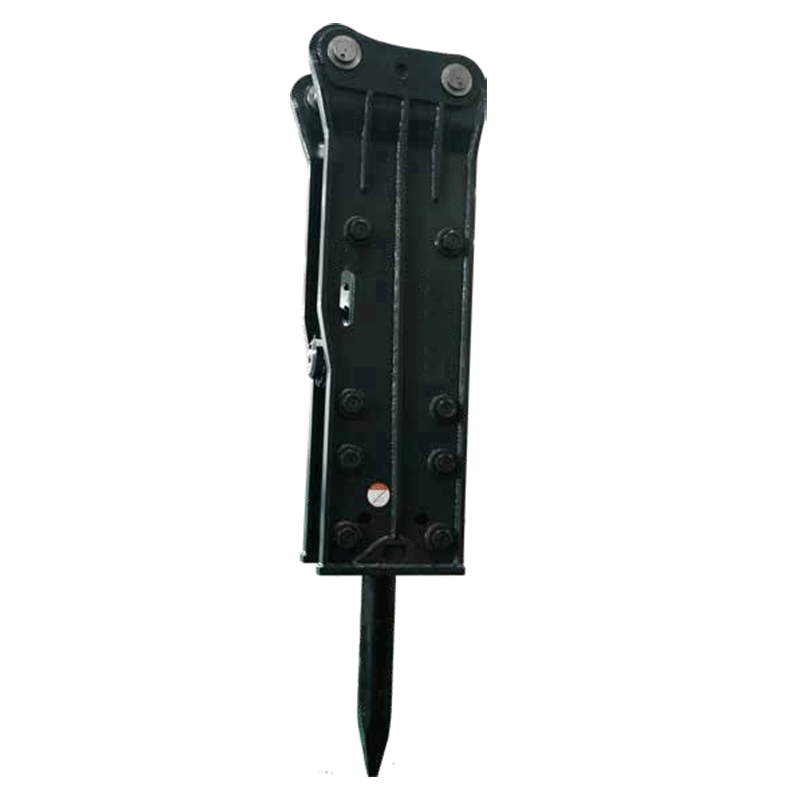
The straight breaker with a drill rod diameter of 40mm is a small breaker tool, which is characterized by small size, light weight, strong maneuverability, but relatively limited impact force. This type of breaker is more suitable for use in small and medium-sized projects, narrow spaces or refined operation scenarios.
1.Local Crushing and Repair of Road Surfaces
Scenario: Repair of local cracks in urban roads, treatment of damage around manhole covers, removal of sidewalk tiles, etc.
Advantages:
The breaker is small in size and can be flexibly moved in urban roads with dense pedestrian and vehicle traffic to avoid affecting traffic.
The straight structure is convenient for vertical or inclined angle operation, accurately breaking local areas (such as damaged road surfaces) without damaging the surrounding intact structures.
The impact force is moderate, suitable for breaking concrete roads or asphalt layers with a thickness of ≤150mm.
2.Groundbreaking before laying underground pipelines
Scenario: When laying water supply, drainage, gas, cable and other pipelines, it is necessary to break the shallow surface structure.
Advantages:
It can be used with 1-5 ton small excavators to operate in narrow streets, green belts and other areas without the need for large equipment to enter the site.
The crushing depth is controllable (usually ≤500mm) to avoid damaging deep pipelines or underground facilities.
1.Partial demolition of walls/floors
Scenario: Demolition of non-load-bearing walls and partition walls during indoor decoration, or modification of floor openings (such as installation of stairs).
Advantages:
The breaker has low noise (relative to large crushing equipment) and is suitable for operation in noise-sensitive environments such as residential buildings and office buildings.
The small diameter of the drill rod can accurately locate the crushing point to avoid excessive damage to the surrounding structure (such as retained load-bearing beams and columns).
2.Crushing of small construction waste
Scenario: After demolishing small building structures (such as walls, temporary structures), crush concrete blocks, bricks and other waste materials for recycling.
Advantages:
Suitable for small excavators, crushing can be completed directly at the construction site, reducing the cost of waste transportation.
The particle size of the crushed waste is small (usually ≤100mm), which is convenient for secondary use or landfill.

1.Construction of farmland water conservancy facilities
Scenario: When building small irrigation channels and wells, break the surface hard soil, rock layer or frozen soil.
Advantages:
Applicable to micro excavators below 3 tons, which can be flexibly operated in the fields without destroying large areas of farmland.
High crushing efficiency for hard soil (hardness ≤ medium weathered rock), suitable for reclamation of small plots or transformation of terrain.
2.Garden landscape transformation
Scenario: Breaking old pavement (such as stone bricks, concrete walkways), digging tree pits or breaking small rock obstacles.
Advantages:
Can operate in narrow spaces such as green belts and courtyards to avoid large equipment crushing vegetation.
The crushing force is mild, suitable for processing lightweight concrete, shale and other materials commonly used in landscape engineering.
1.Small factory floor renovation
Scenario: Repair of damaged factory workshops and warehouse floors, or removal of the original floor when adding new equipment foundations.
Advantages:
Suitable for small excavators, which can quickly enter indoor operations and reduce the impact on production processes.
Suitable for crushing industrial floors with a thickness of ≤200mm (such as ordinary concrete or wear-resistant floors).
2.Breaking of pipeline wells and equipment foundations
Scenario: Breaking of concrete pipeline wells or small equipment foundations when repairing or replacing industrial pipelines and equipment.
Advantages:
Precisely control the breaking range to avoid damage to surrounding pipelines or structures and reduce construction risks.
1.Material hardness limit:
Suitable for crushing materials with compressive strength ≤30MPa, such as ordinary concrete (C30 and below), red bricks, weathered rocks, hard soil, etc.
Not suitable for: high-strength reinforced concrete (C40 and above), granite, basalt and other hard rocks.
2.Equipment matching requirements:
Need to be matched with 1-5 ton excavators, and the hydraulic system pressure of the excavator needs to match the parameters of the breaker (usually working pressure 10-14MPa, flow 30-60L/min).
If the hydraulic power is insufficient, it may lead to reduced crushing efficiency or equipment damage.
The core advantages of the straight breaker with a drill rod diameter of 40mm are flexibility, precision and low environmental impact. It is suitable for use in scenarios with limited space, low material strength or requiring delicate operations. If you need to handle high-strength materials or large projects, you need to choose a larger breaker (such as a drill rod diameter ≥50mm) and a matching excavator.
Contact With Us
If you have any questions please fell free to contact with us.